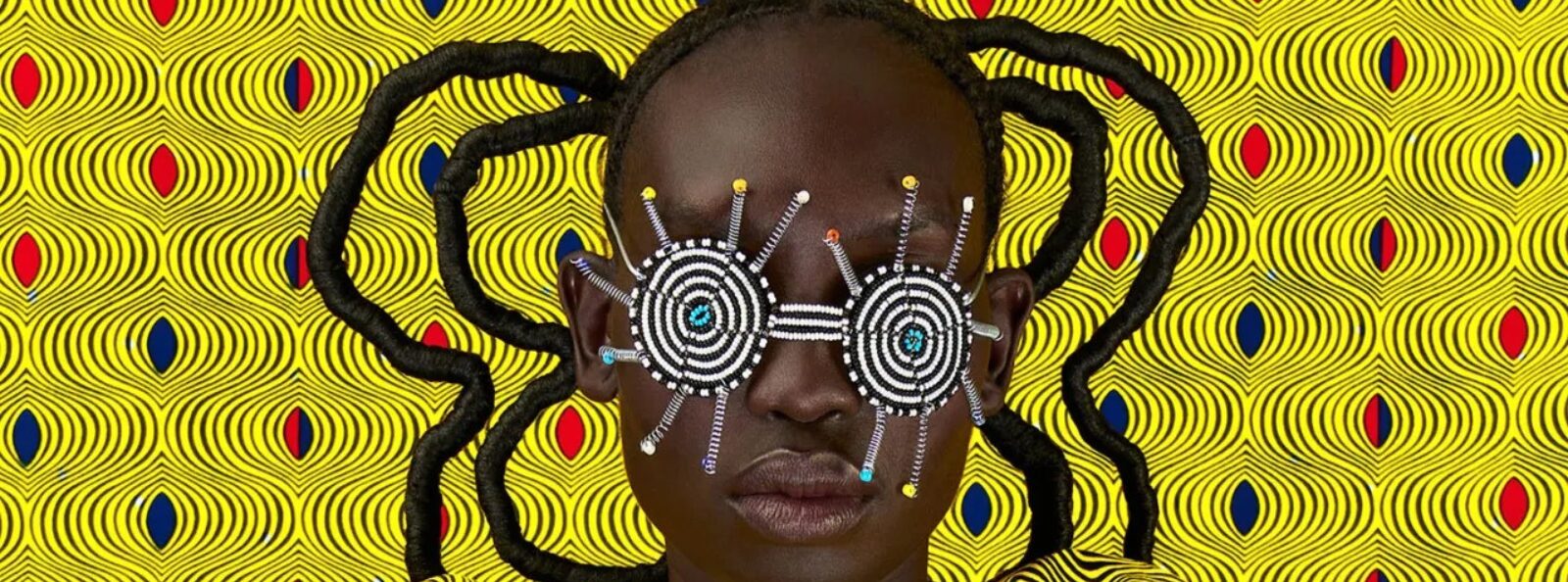
Du 7 février au 3 mars, les Galeries Lafayette Paris Haussmann présenteront une partie de la scénographie. Située au premier étage du Bâtiment Coupole, cette présentation s’inscrit dans un engagement fort en faveur de la diversité culturelle, à travers un regard contemporain sur ce tissu emblématique.
Une belle occasion de réfléchir à la place de l’art et de la culture dans notre quotidien, tout en célébrant le patrimoine africain et ses résonances dans le monde entier.
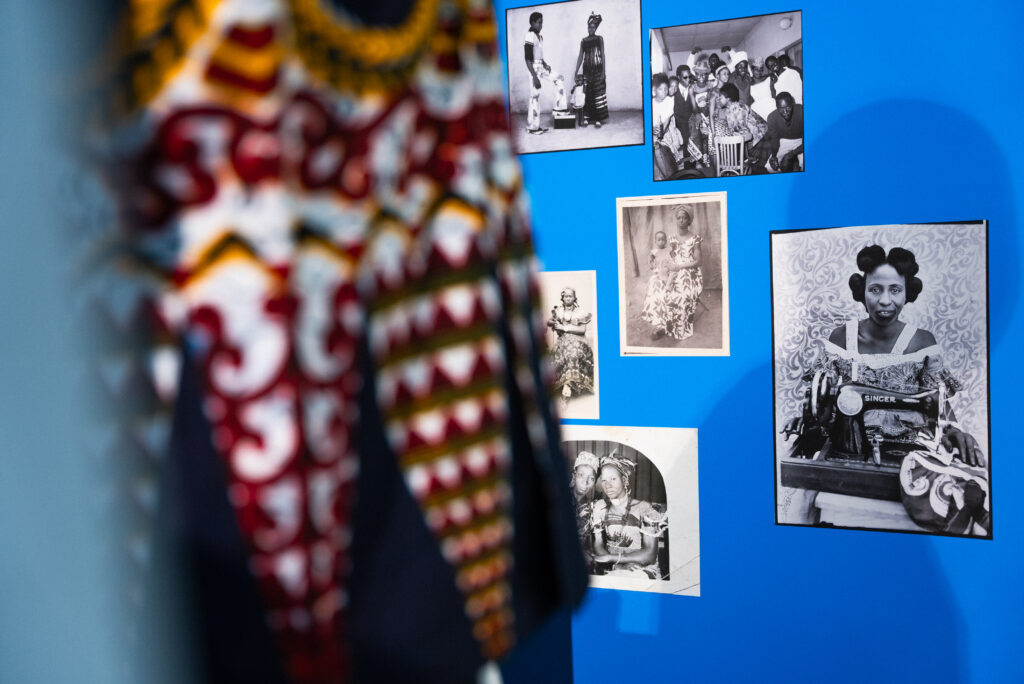
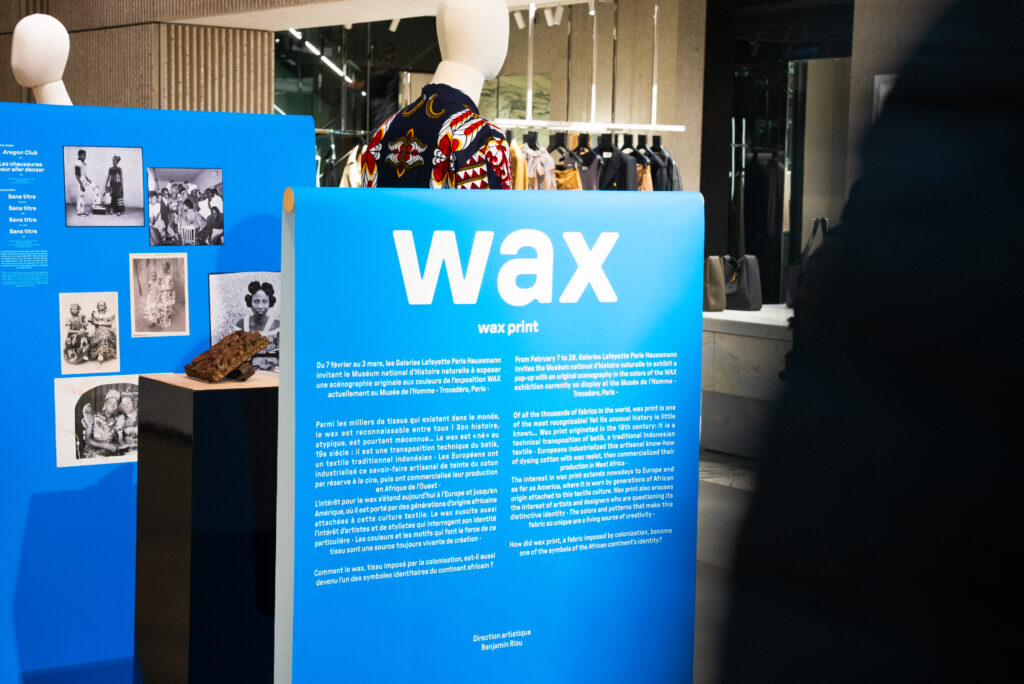
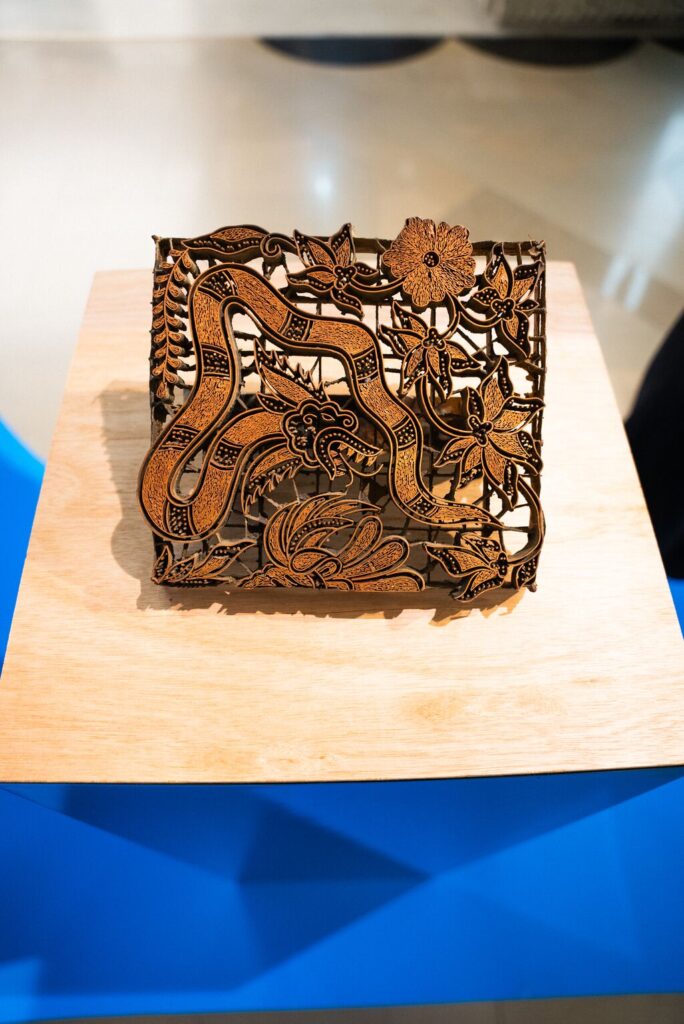
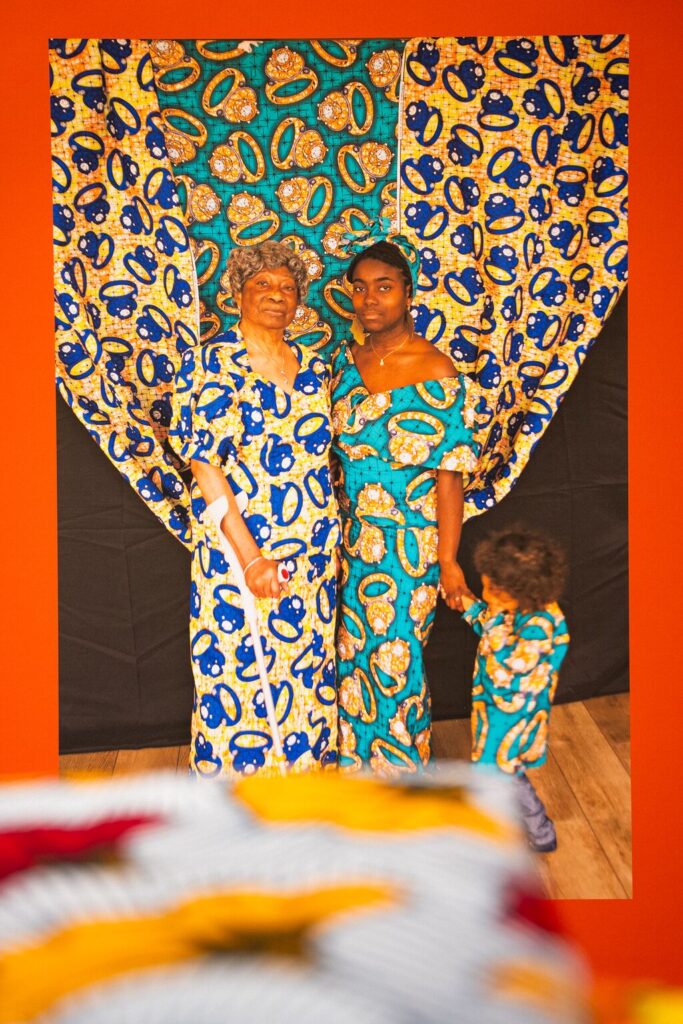
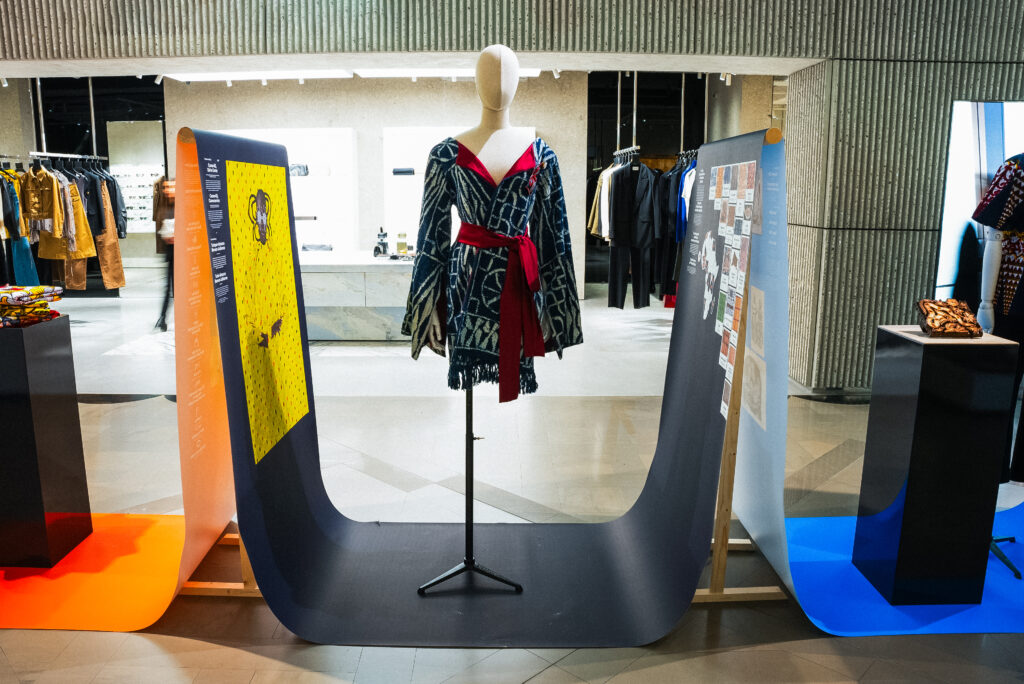
Exposition WAX au Musée de l’Homme à Paris
Depuis plus d’une décennie, la popularité de ce textile reconnaissable entre tous, est sans précédent dans les sociétés occidentales : vêtements, accessoires, objets…
Le wax se fait de plus en plus présent dans les maisons et les garde-robes. Pourtant, son histoire si singulière reste méconnue du grand public. Croisant les regards d’anthropologues, historiens de l’art, couturiers, designers et artistes contemporains, l’exposition montre le wax sous toutes ses coutures et permet de découvrir une grande variété de tissus, illustrant la richesse des dessins, motifs et couleurs qui le caractérisent et permettant également d’apprécier les différentes qualités de tissus (fancy, imitations, super-wax, glitter glam…).
Le parcours de l’exposition se déploie en deux volets : l’un est consacré à l’histoire du tissu, depuis plus de 120 ans entre Asie, Europe et Afrique ; et l’autre aborde son actualité sur la scène de la mode, du design et de l’art contemporain.
L’histoire du wax
Le wax est un tissu de coton imprimé sur deux faces, selon une technique utilisant la cire (wax en anglais) pour délimiter les plages d’impression des motifs.
Son histoire débute au XIXe siècle au carrefour de l’Asie, de l’Europe et de l’Afrique, dans un contexte colonial, autour d’intérêts commerciaux et de choix culturels. Les premiers exemplaires de wax sont en effet fabriqués par des entrepreneurs néerlandais cherchant à reproduire les traditionnels batiks indonésiens, qu’ils destinent au marché indonésien. Mais c’est en Afrique de l’Ouest que ces imitations connaitront le succès avant de se diffuser sur tout le continent. De cet engouement va découler l’industrialisation de la production et l’apparition de compagnies concurrentes asiatiques notamment. L’exposition revient sur les grandes étapes et les figures importantes de cette saga qui ont fait du wax un enjeu de commerce mondial. La lumière est ainsi faite sur le rôle majeur joué par les femmes, comme les « Nana Benz », puissantes femmes d’affaires au Togo à partir des années 1960, dans la diffusion et le rayonnement de ce tissu.
Ce volet historique de l’exposition montre aussi que le tissu doit avant tout son succès à ses motifs, dont les bases iconographiques ont été posées dès le tout début du XXe siècle, et qui puisent leur spectaculaire diversité dans la faune et la flore aussi bien que dans les actualités politiques et sociales. Par ses motifs et la coupe du vêtement, il permet ainsi à celui ou celle qui le porte de faire passer un message, de montrer son appartenance à une communauté ou son engagement en faveur d’une cause politique ou non, qui lui tient à cœur. Il accompagne donc les individus dans leur parcours de vie, ce qui en fait un textile à forte connotation affective.
La richesse de ce répertoire iconographique constitue aujourd’hui un véritable patrimoine, qui perdure dans le temps tout en continuant d’évoluer.
Quand les artistes s’emparent du wax
Depuis deux décennies, le wax suscite l’intérêt croissant d’artistes et de stylistes qui revisitent sa signification historique et culturelle autant qu’ils explorent ses possibilités esthétiques. L’exposition présente une sélection de leurs œuvres qui donnent à voir toute la diversité des points de vue et significations qui entourent le wax.
Pour certains, il est un emblème, un symbole d’appartenance à un héritage partagé, pour d’autres, il demeure un tissu imposé par l’impérialisme européen, engendrant un sentiment de rejet.
Les œuvres présentées soulèvent donc des questions sur l’appropriation et la réappropriation culturelles, mais aussi sur les notions de Panafricanisme, d’empowerment, d’Afropéen, d’upcycling, et d’afrodystopie.
La saison Migrations au Musée de l’Homme
Le Musée de l’Homme est un des 12 sites français du Muséum national d’Histoire naturelle.
Lieu culturel et scientifique ouvert sur le monde, il accueille le public dans sa Galerie de l’Homme, un fabuleux espace qui explore le passé, le présent et le futur de l’Humanité. Il propose également d’ambitieuses expositions temporaires qui éclairent les grands débats de sociétés et organise des événements culturels tous publics, festifs et inattendus. Le Musée de l’Homme se positionne comme un lieu de débat citoyen, pour nous aider à éclairer le monde complexe qui nous entoure.
Face aux débats houleux dans l’actualité politique sur la question des migrations humaines, le Muséum national d’Histoire naturelle a souhaité replacer le fait migratoire à l’échelle de la planète et du temps long en présentant deux expositions sur cette thématique sur son site du Musée de l’Homme. La première intitulée « Migrations, une odyssée humaine » est à découvrir jusqu’au 8 juin 2025. Elle propose un état des lieux de la recherche scientifique et fournit des clés de compréhension essentielles pour saisir la complexité des phénomènes migratoires, à l’échelle de la planète et sur le temps long. La deuxième exposition de la saison Migrations est consacrée au wax, cette étoffe emblématique du continent africain.
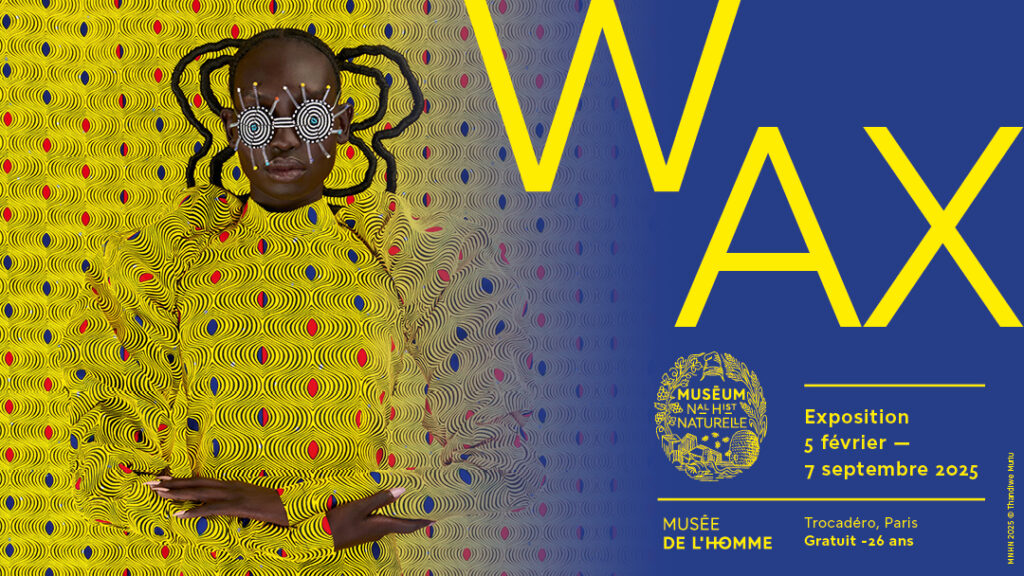
Une programmation tout public accompagne l’exposition. D’une conférence inaugurale le lundi 10 février à un week-end festif autour du WAX les 17 mai et 18 mai 2025, il y en a pour tous les goûts.
Retrouvez tout le programme et réservez vos visites et ateliers en famille sur museedelhomme.fr
Informations pratiques :
Exposition WAX, du 5 février au 7 septembre 2025,
au Musée de l’Homme
Place du Trocadéro, 75016 Paris
Plein tarif : 15 € – Tarif réduit : 12 €
Gratuit pour les moins de 26 ans
Le billet donne accès aux expositions temporaires et permanente du musée.








